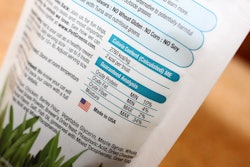
A decade ago, Petfood Industry surveyed readers about the importance of sustainability in their companies. In the intervening decade, sustainability evolved from a consumer driven trend to a standard part of pet food producers and suppliers’ business strategies. The ongoing COVID-19 pandemic may have boosted the pet food industry’s drive towards economic models that take into account environmental and social factors that the welfare of future generations depends upon. In a recent informal poll on LinkedIn, Petfood Industry’s audience identified sustainability as the biggest trend in 2021.
The United Nations Brundtland Commission defined sustainability as “meeting the needs of the present without compromising the ability of future generations to meet their own needs.” Since 1987, sustainability grew to include a wide range of specific environmental, social and economic issues. Numerous problems, ranging from existential threats to minor annoyance, now fall into a common sustainability bin. However, halting the razing of the Amazon rainforest presents far different challenges from raising Amazon.com employees’ working conditions. At the same time, businesses need to maintain their own financial viability, while balancing environmental and social elements, to attain economic sustainability.
A decade of Petfood Industry sustainability coverage
In 2010, 62 percent of respondents believed consumer demand drove the adoption of sustainable practices by their companies. Meanwhile, 58 percent believed their organizations follow sustainable business models because it’s the right thing to do. More than three-quarters believed consumers defined “green” pet foods as containing natural ingredients. Recyclable packaging was part of the consumer definition of sustainable pet food, according to 60 percent of respondents. Within pet food company practices, 55 percent noted that energy conservation delivered the best return on investment. In 2010, one-third of participants were required to report sustainability measures to shareholders, regulatory bodies, retailers or other stakeholders. Many specific sustainable practices, such as retrofitting facilities, substituting renewable materials or changing supply chain structure, were considered as potentially good returns on investment, but the timeline since implementation may have remained too short to see the concrete benefits.
Over the next decade, those benefits may have begun to accrue. These articles trace the development of sustainability in the pet food ingredients, production and packaging.
Survey: consumers drive sustainability in petfood
Debbie Phillips-donaldson, July 7, 2010
Sent to the Petfood Industry audience via e-mail in February and March 2010, the sustainability survey received 108 responses. Respondents were mostly from North America (66%) and work for petfood manufacturers (63%), yet Europe (14%), South/Central America (10.4%), Asia (4.7%) and Asia-Pacific (2.8%) were also represented, as were industry suppliers (19%), wholesalers/distributors/brokers (10.4%), consultants (8.5%), retailers (5.7%) and marketers (3.8%).
Is pet food at a tipping point for sustainability?
Debbie Phillips-Donaldson, August 4, 2015
Pet food companies and their involvement in sustainability and social causes—or questions about whether they’re involved enough—have been in the US news recently. First, the New York Times published an exposé on the slave trade underpinning the Southeastern Asia fish trade, which supplies some pet food and feed companies. The headline, “’Sea Slaves’: the Human Misery That Feeds Pets and Livestock,” bordered on the sensational but immediately gave the gist of the story.
Will millennials lead on pet food sustainability?
Debbie Phillips-Donaldson, April 28, 2017
With millennials now the largest demographic of pet owners, they stand to exert significant influence on pet food trends, product development and marketing, beyond the impact they’re already having. One area that seems ripe for change is willingness to pay more for sustainability practices and products.
Sustainability in the pet food industry
Ryan Yamka, August 10, 2017
Sustainability concerns about the world’s food supply is nothing new for both the human and pet food industries. At Superzoo 2017, this was confirmed by claims appearing on new packaging. For example, many pet foods have already begun focusing on marine sustainability and seeking third-party approval by meeting requirements established by certain agencies to utilize their logos on their packaging.
Pet food sustainability established beyond trend level
Tim Wall, February 3, 2020
After simmering as a trend for decades, pet food sustainability may have emerged as a permanent aspect of the industry and its global supply chain. Ranging from pollution and labor conditions to corporate social responsibility, sustainability involves ensuring that future pet food professionals will have access to resources equivalent to or better than today’s and live dignified lives. Pet food companies have found innovative ways to meet that obligation to the future. However, challenges remain, especially when consumer demands contradict each other.
Sustainability expands scope with pandemic, protests
Tim Wall, November 3, 2020
Perhaps being part of a global disaster during the pandemic served as an analogy for other ongoing or looming disasters and social problems, such as climate change and systemic racism. Maybe being stuck at home gave people time to reflect on what really matters in life. Regardless, market researchers with Euromonitor International believe the pandemic and other events of 2020 influenced business professionals’ attitudes toward sustainability, which means meeting present needs without compromising the ability of future generations to do likewise.
What does sustainability look like in pet food extrusion?
Lindsay Beaton, December 14, 2020
Sustainability, as a trend and as a corporate responsibility, is touching every aspect of pet food. Some parts of the process seem more straightforward: pet owners are looking to the traceability of raw ingredients and the recyclability of packaging as the frontmost attributes of sustainability. But those desires encompass a lot more than just their specific place in the pet-food-making process. Take extrusion, for example. What does sustainability look like to those who make and maintain the machines and processes that help create the end product?


















